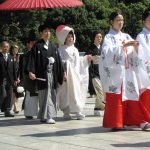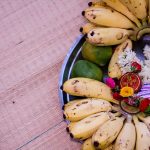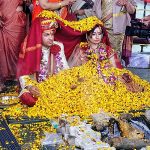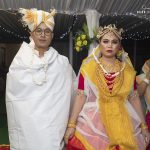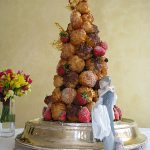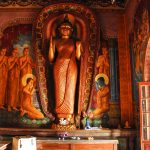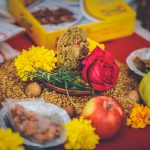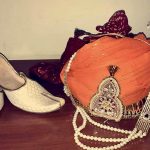The Gowdas are a community that is native to the South Indian state of Karnataka. Their wedding ceremonies differ slightly according to the region but the structure remains the same.
If you’re planning on attending a Gowda wedding, this article will give you an idea of what to expect.
Background
Kannada Gowda marriages are generally simple affairs without any flash or extravagance. The wedding is usually a 2-3 day event.
Most marriages are held during the daytime. The décor and outfits consist of bright, joyful colors to represent the special occasion. A lot of variation can be found within the Kannada wedding, depending upon which region of Karnataka you are in.
Traditionally Kannada weddings do not celebrate pre-wedding rituals like haldi and mehendi. However, modern couples are increasingly choosing to add these events to their weddings. Horoscopes were considered to be significant for a couple but nowadays they are also waning in popularity.
It is an event where-in the entire family comes together from the villages to celebrate the wedding function. The Family astrologer would have fixed the date for the same.
Nischay Tamulam
This ceremony is considered an equivalent of the engagement ceremony in other cultures. The parents of the bride and groom exchange betel leaves and nuts to show their approval of the match.
The bride is offered a saree by the groom’s family, along with a matching blouse coconut, and sweets. The same is offered to the groom except he is given a dhoti instead of a saree.
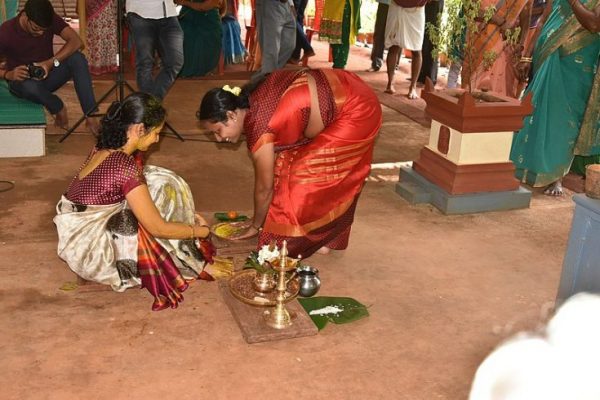
A priest is also invited to this ceremony. His job is to match the horoscopes of the couple and decide upon an auspicious date for the wedding.
Naandi
Shastras is a term given to any religious ceremony or puja that is held during the period of a Kannadiga wedding. Naandi is one of these shastras that marks the beginning of the wedding rituals.
This Shastra is held independently in both the bride and the groom’s houses. A copper pot filled holy water and topped with coconut is placed inside the house. This is a symbol for Amrit, the liquid of eternal life according to Hindu mythology.

The ritual is performed by the family priest who also recites prayers to ensure the wedding ceremony goes smoothly. Naandi is also a way to bless the couple with abundance, health, and wisdom.
The first printed invitation card is placed at the altar with the copper pot as a way to honor the Almighty before being sent out to guests.
Kaashi Yaatre
One of the funniest rituals in any wedding you’ll ever see is the Kaashi Yaatre.
This ritual happens before the wedding. And the groom pretends to walk away from his family as they haven’t brought him a suitable bride.
The name is a reference to the holy pilgrimage site of Kaashi. Thus, the groom threatens to leave for a pilgrimage soon. As he is about to leave the house, the maternal uncle grabs him to stop him. He is then shown the bride his family chose for him.
The groom then comes back and participates in the subsequent rituals of the wedding.
Mandap Puja
The wedding ceremony is not very complicated. But even this relatively short ceremony is loaded with different traditions. The Mandap Puja or altar worship is one of these rituals that complement a Kannada wedding perfectly.
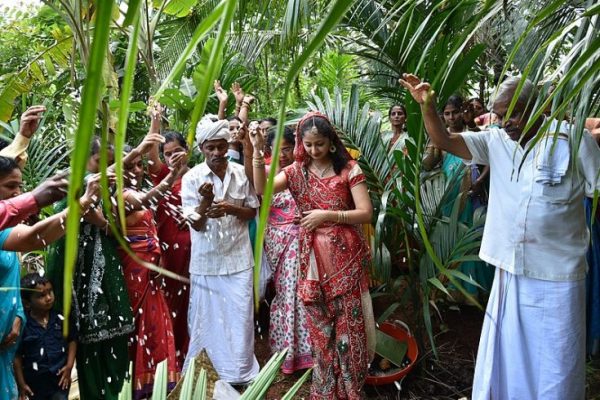
Before the wedding ceremony begins, the altar is prepared. The priest in charge of the wedding then conducts a worship and purifying ceremony. This is done to ensure that all negative energies are removed from the venue.
Var Puja
In Kannada traditions, the groom is considered to be an incarnation of Lord Vishnu. As such, he is treated as an aspect of the almighty in human form.
The groom is led to the wedding altar by the bride’s father. Here the bride is already waiting for the groom and he is seated next to her. The bride’s father then washes the groom’s feet with a special utensil. This is a symbol of respect between the men and also shows the father accepting the importance of the groom in their family’s life.
After the ritual is done, the bride’s father presents the groom with a silk dhoti and scarf. These items of clothing are collectively known as the pitambar. The groom is meant to change into these clothes and wear them throughout the wedding.
Jaimala
During the wedding ceremony, the bride’s face remains covered behind a fan made of peacock feathers. She is accompanied by her sister or another close female relative who holds this fan up in front of her face.
A cloth curtain is placed on the altar between the bride and the groom. They are made to sit on either side of this curtain. It is considered inauspicious if the couple looks at each other before the ritual is completed.
Once the priest begins reciting the mantras for the wedding, the curtain is gradually lowered. Finally, in the end, the couple can look at each other.
The ceremony ends with them putting flower garlands called varmalas/jaimalas around each other’s necks.
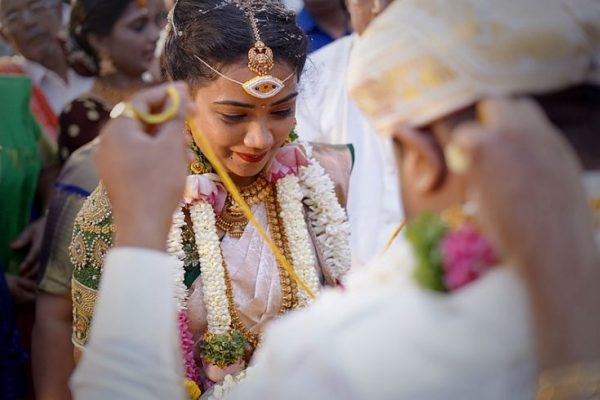
Saptapadi
This is another ritual that is shared between many cultures in India and the Kannadiga are no exception.
The end of the bride’s saree is tied to the scarf worn by the groom. The knot is meant to symbolize the union of the couple into one household. The couple then goes around the sacred fire seven times in a clockwise circle.
All seven circles are meant to symbolize all vows made by the bride and groom toward each other. Hence the term, Saptapadi. After completing the circles, the bride is made to sit on the left-hand side of the groom.
This is done to illustrate her taking over his heart which is also located on the left side of the body.
Thaali
The thaali ceremony is the official declaration and completion of the marriage. The bride is surrounded by five married women from either family. The groom then ties the thaali or mangal sutra around her neck.
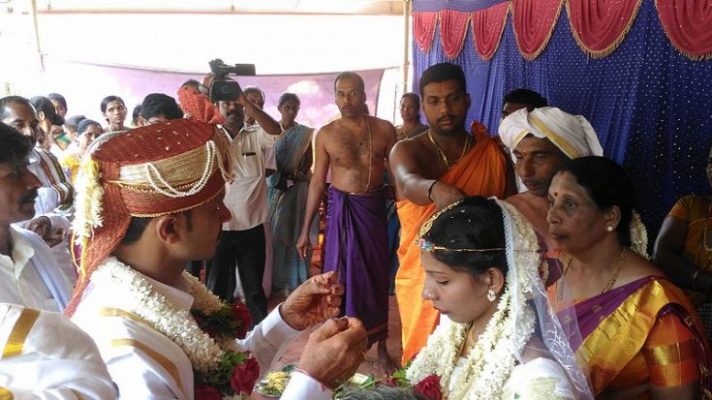
The manga sutra is a black thread with gold highlights that represent the matrimonial bond between the couple. This is the last wedding ritual performed in a Gowda wedding. Finally, the elders of the family gather together to bless the newlyweds.




